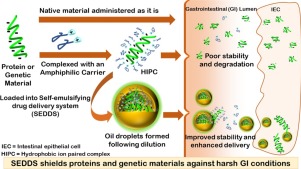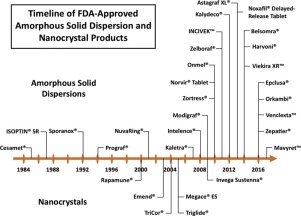- Home
- Blog
- News
- Basics
- Sources
- Agencies, Regulatory & Organisations
- CERSI Excipients Browser
- Excipient Report
- Excipient DMF List
- EXCiPACT Certified Companies
- Excipient Documentation
- Excipient EINECS Numbers
- Excipient E-Numbers
- FDA Inactive Ingredient List
- FDA GRAS Substances (SCOGS) Database
- IPEC Americas
- USP - U.S. Pharmacopeia
- Definitions
- Whitepapers / Publications
- Supplier
- Services
- Media
- Events
- 1st pharmaexcipients Poster Award
- Event Calendar
- Events featured by pharma-excipients
- 4th Annual Formulation & Drug Delivery Congress
- DDF Summit
- ExcipientFest Americas
- ExcipientFest Asia
- Global CompliancePanel
- International Conference and Exhibition on Pharmaceutics & Novel Drug Delivery Systems
- Formulation & Drug Delivery USA Congress
- Laboratory Medicine 2018
- Making Pharmaceuticals Europe
- Making Pharmaceuticals Exhibition
- Pharma Integrates
- PharmaExcipients China @CPhI China
- TTC Technology Training Center
- Jobs
- Online Sourcing
- Contact
01. April 2018
Self-emulsifying drug delivery systems (SEDDS) have been widely employed to improve the oral bioavailability of poorly soluble drugs. In the past few years, SEDDS were extensively investigated to overcome various barriers encountered in the oral delivery of hydrophilic macromolecules (e.g., protein/peptide therapeutics and plasmid DNA (pDNA)), as well as in lowering the effect of food on drugs' bioavailability. However, the main mechanism(s) by which SEDDS could achieve such promising effects...
17. January 2018
The efficacy of antiretroviral therapy is significantly compromised by medication non-adherence. Long-acting enteral systems that can ease the burden of daily adherence have not yet been developed. Here we describe an oral dosage form composed of distinct drug–polymer matrices which achieved week-long systemic drug levels of the antiretrovirals dolutegravir, rilpivirine and cabotegravir in a pig.
15. November 2017
Poor water-solubility remains a typical property of drug candidates in pharmaceutical development pipelines today. Various processes have been developed to increase the solubility, dissolution rate, and bioavailability of these active ingredients belonging to biopharmaceutical classification system (BCS) II and IV classifications. Since the early 2000s, nanocrystal delivery and amorphous solid dispersions are more established techniques to overcome the limitations of poorly-water soluble drugs..
12. October 2017
The design and production of an oral dual-compartmental dosage unit (dcDU) was examined in vitro and in vivo with the purpose of physically isolating and modulating the release profile of an anti-tuberculosis drug combination.
11. September 2017
Nanoparticles have demonstrated significant advancements in potential oral delivery of insulin. In this publication, we review the current status of polymeric, inorganic and solid-lipid nanoparticles designed for oral administration of insulin.
14. August 2017
Crohn’s disease (CD) is a serious and lifelong chronic inflammatory bowel disease (IBD) which can affect any part of the gastrointestinal tract (GIT) but most commonly occurs in the lower part of the ileum, caecum and ascending colon.
07. August 2017
Metformin is an oral hypoglycemic agent used in the type 2 diabetes, whose poor bioavailability and short half-life make the development of effective extended-release formulations highly desirable.






